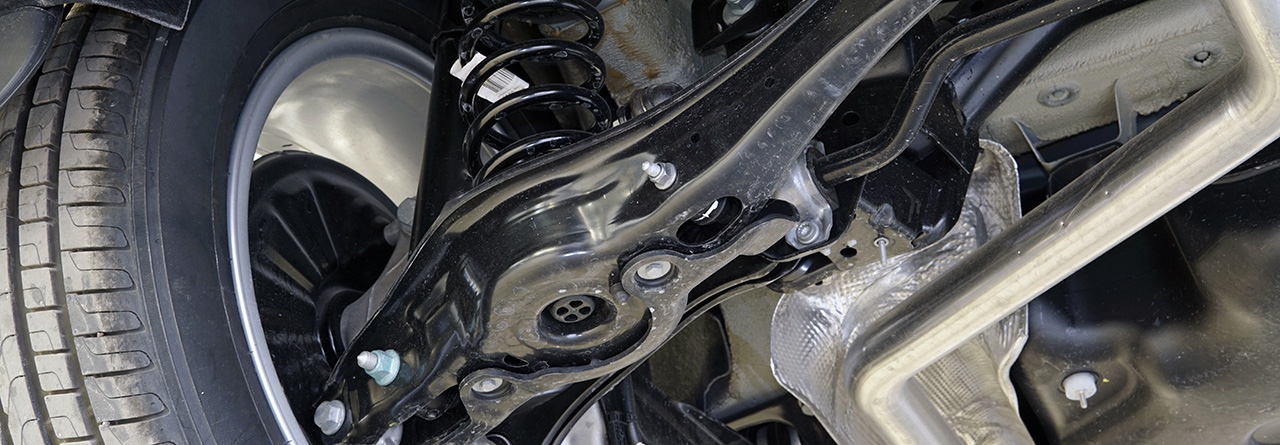Auto Services in Saskatoon
Exhaust
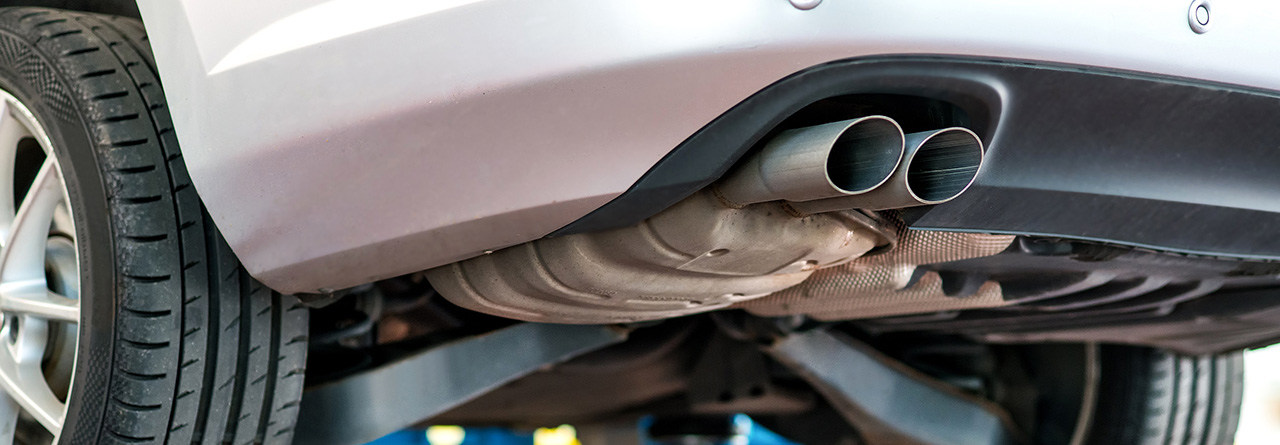
Muffler
The muffler is designed for the exhaust gases to expand slowly. If the gases are allowed to expand too quickly then the resulting noise can be quite deafening. Muffler design needs to quieten the noise of flowing exhaust gases without creating too much backward pressure on the exhaust gas flow. If too much backward pressure occurs, the free flow of exhaust gases is restrained and engine power is compromised as a result of not all of the burned gases being forced from the cylinders efficiently. As well as a loss of engine power, the fuel consumption will increase as backward pressure increases. The exhaust system also helps prevent harmful emissions from escaping into the environment.
Converter
A catalytic converter is a vehicle emissions control device which converts toxic by products of combustion in the exhaust to less toxic substances by way of catalysed chemical reactions. an oxidizing reaction converts carbon monoxide and unburned hydrocarbons, and a reduction reaction converts oxides of nitrogen (NOx) to produce carbon dioxide (CO2), nitrogen (N2), and water (H2O). There are many different types and styles of converters, but the inside is the same for the most part. The inside consists of a ceramic monolith in a honeycomb shape. Catalytic converters have proven to be reliable and effective in reducing noxious tailpipe emissions.
Oxygen Sensor
Every new car, has an oxygen sensor. The sensor is part of the emissions control system and feeds data to the vehicles computer. The goal of the sensor is to help the engine run as efficiently as possible and produce as few emissions as possible. The oxygen sensor is positioned in the exhaust pipe and can detect rich and lean mixtures. The mechanism in most sensors involves a chemical reaction that generates voltage. The engine’s computer looks at the voltage to determine if the mixture is rich or lean, and adjusts the amount of fuel entering the engine accordingly.
Minute Muffler & Brake provides a large selection of exhaust products for almost every vehicle, and if not we can build it. We have the ability to replace original equipment exhaust, manufacture and custom build. Below is a video demonstrating one of our new mufflers.
Brakes
You should have your brakes checked once a year minimum to avoid costly repairs and/or brake failure. Come see us and we’ll inspect your entire brake system, explain any service we might recommend and provide you with a written estimate before we start. There are many symptoms of brakes wearing out, some of them include:
- Brake pedal pulsating
- Grinding or Squealing noise
- Brake pedal feels spongy
- Your car pulls one way when brake is applied
- Brake light is on
- Loss of brake fluid
By examining the brake pad sometimes we can determine whether or not the caliper needs to be replaced. If the pad is worn unevenly this means the caliper could be seized, or sticking on one side which means it will need to be replaced.
There are two basic types of brakes: disc and drum. Most vehicles come with power assisted front disc and rear drum brakes and today, almost all vehicles are factory equipped with anti-lock braking systems (ABS). Computer-controlled ABS brakes are designed to allow you to maintain steering control preventing wheel lock-up during panic braking situations or braking on wet or icy surfaces. It does this by pulsating each brake individually when it feels the tire slipping or skidding.
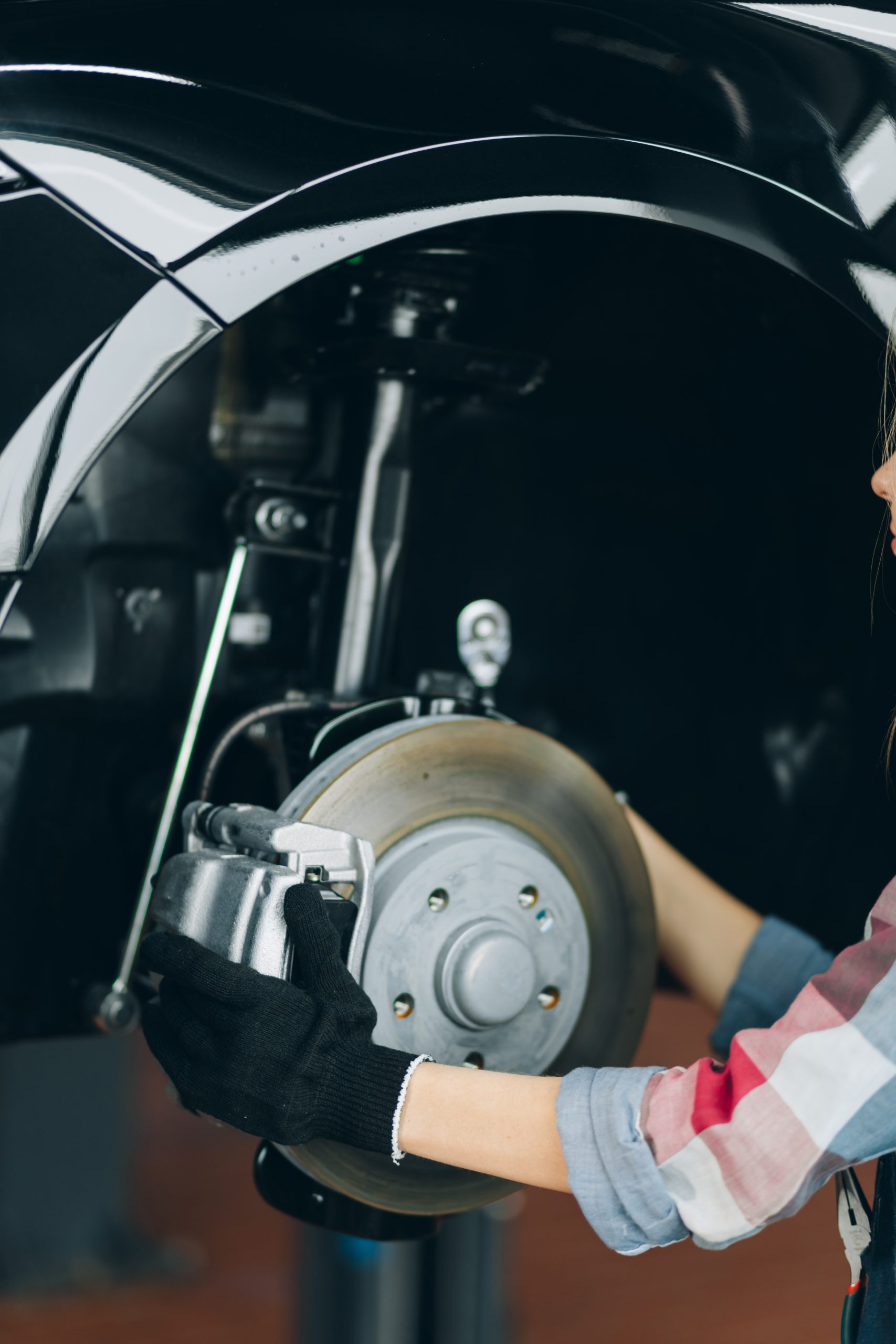
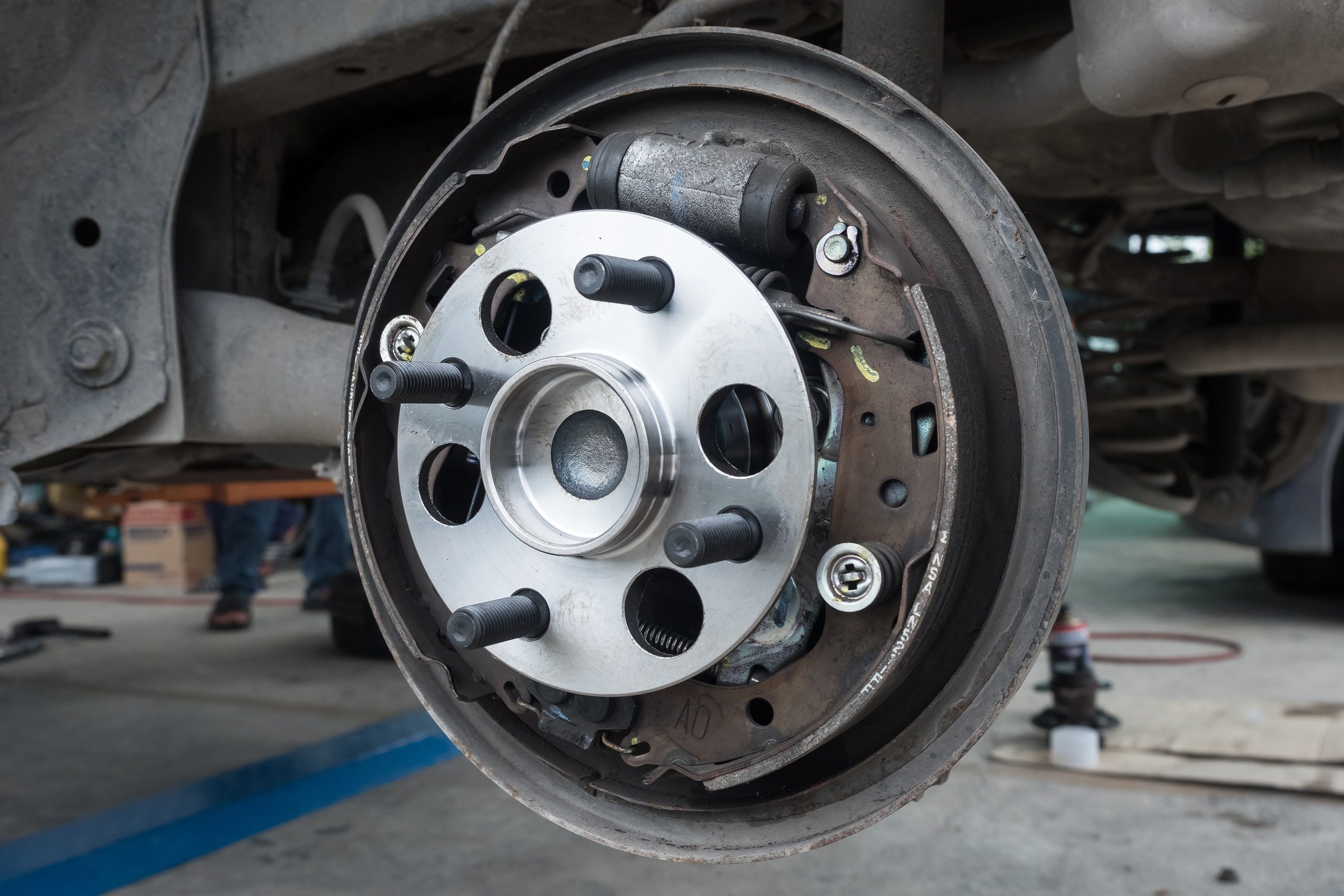
Drum Brakes
So called because the braking part is drum-shaped. Inside the drum there are two large, curved brake pads that push outwards against the drum resulting in slowing you down.
Below is a picture of the inside of a drum brake, once the drum itself is removed. The drum is a slightly rusty, dish-shaped piece which the wheel bolts on to. The rim of the drum is about two inches deep, completely covering everything you can see in the picture.
At the top of the picture is a wheel cylinder which pushes the two brake pads outwards when you press the brake pedal. The pads push against the inside of the drum, and the friction slows you down. Drum brakes are good because they’re simple and fairly reliable.
However, drum brakes have some bad features: if you go through some water, they are very ineffective until the water has drained out of the drum; and they get less efficient as they get hot. When they get hot the drum expands, growing further away from the pads, so you have to press the pedal further down to get the same amount of braking, and if they get hot enough you get very little braking at all. This is very bad news if you’re driving down the side of a mountain on a switchback road or in many other circumstances where brake failure could be fatal.
Disc Brakes
Working somewhat like bicycle brakes, disc brakes work by using calipers to clamp brake pads against either side of the spinning disc.
Disc brakes are good because when they warm up, the disc gets larger and is therefore closer to the pads, meaning you don’t have to push as hard on the pedal to get good braking. Also if you drive through water, it just falls off the disc so you get your stopping power back very quickly. They’re also generally more efficient than drum brakes and are easier to set up.
You may hear about ‘cross drilled’ disc brakes, this means they have small holes drilled through the face of the disc as in the picture above. The holes were originally designed to help remove gas caused by brake pads heating up, but with modern pads being much more resilient they are just there for show.
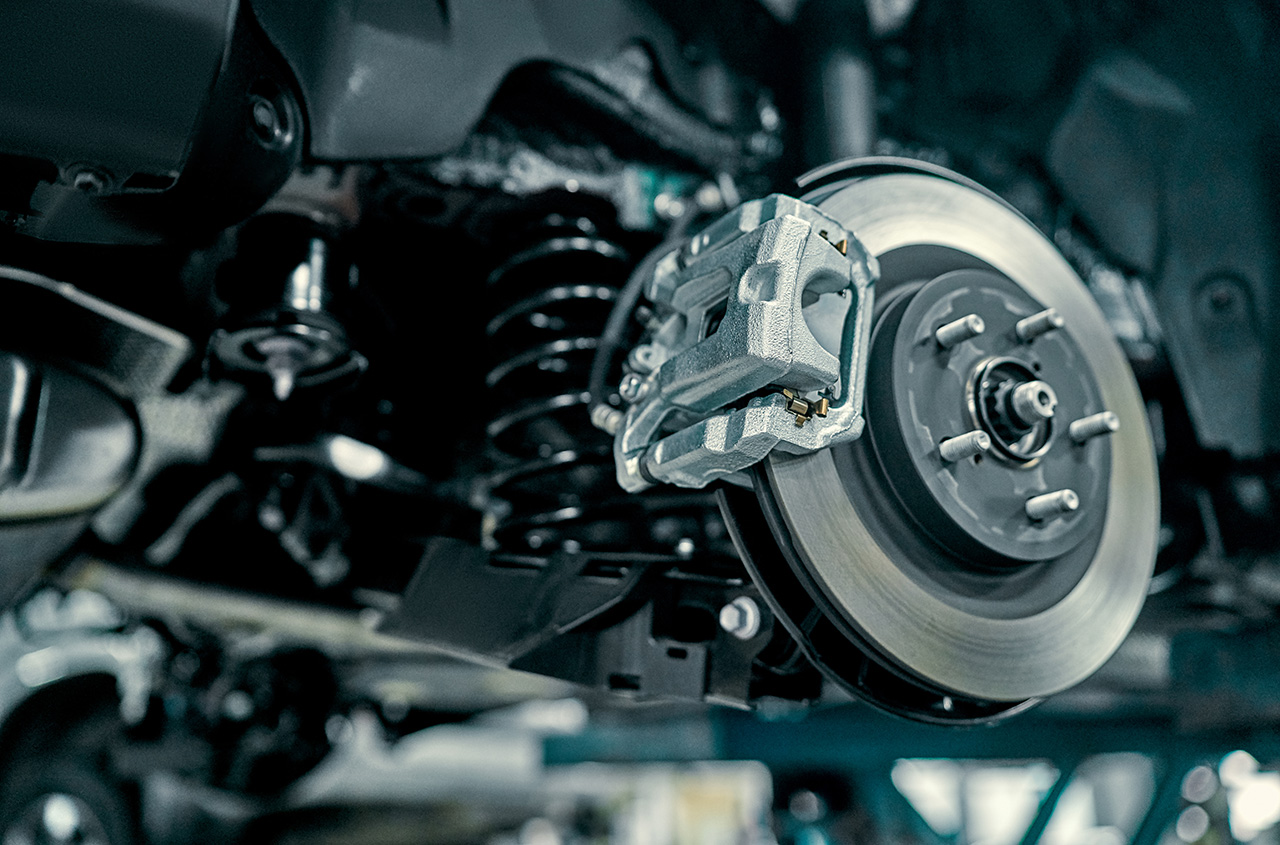
Steering & Suspension
Suspension components wear out gradually and may not be noticed until the system fails. So, it’s important to have your suspension system checked periodically to ensure your driving comfort and safety, especially if your vehicle has been driven 80,000 km or more. The steering and suspension systems are important for a safe, comfortable ride. When power steering is working optimally, you can respond to unexpected obstacles in the road. The suspension system absorbs bumps in the road as well the impact of sudden stops, keeping the ride safe and smooth, also preventing the wear of other parts including brakes. So it’s important to maintain your vehicle’s steering and suspension components to ensure a high level of comfort and stability
Monroe is a leading supplier of ride control products to OE vehicle manufacturers worldwide, thats why Minute Muffler & Brake carries their product. We carry top of the line parts to avoid failure due to a defective part, which could have serious results.
Steering
Worn shocks and struts can allow excessive body roll when turning, which affects the vehicle’s ability to safely steer around objects in the road.
Stopping
Worn shocks and struts can allow too much weight transfer to the front wheels during braking, which could result in a measurable increase in stopping distance.
Stability
Worn shocks and struts can allow excessive roll, sway and bounce while the vehicle is in motion, which reduces the driver’s control.
Drive comfortable and safe, come see us for more information
